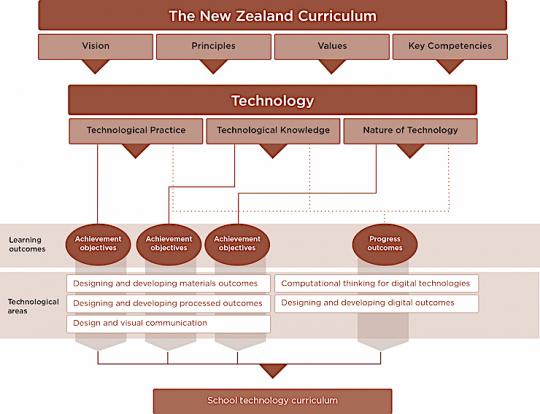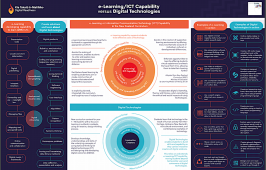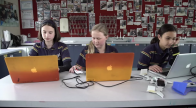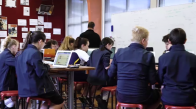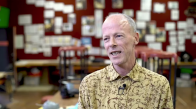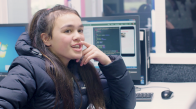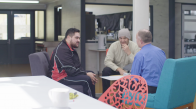Digital technologies questions and answers
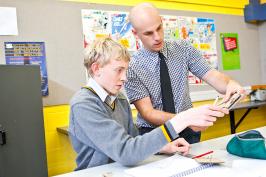 Answers to questions from teachers and school leaders – Are we on the right track?
Answers to questions from teachers and school leaders – Are we on the right track?

On this page you can find answers to the most common questions educators have been asking about digital technologies within the revised technology learning area.
Curriculum – What's changed? What does it look like now?
Is digital technologies a whole new learning area in the NZC?
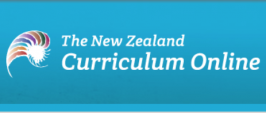
Digital technologies (DT) is part of the revised technology learning area, not a separate area.
There are five technological areas in the technology learning area. These are:
- Designing and developing materials outcomes
- Designing and developing processed outcomes
- Design and visual communication
- Computational thinking for digital technologies
- Designing and developing digital outcomes.
For the full description of the revised learning area, see The New Zealand Curriculum Online – Technology.
What has been revised or changed in the technology learning area?
The revised technology learning area has five technological areas, and two of these are digital – computational thinking for digital technologies (CTDT) and designing and developing digital outcomes (DDDO).
For CTDT and DDDO, progress outcomes have been developed for curriculum levels 1–8.
See the progress outcomes, exemplars, and snapshots:
Construction and mechanical technologies has changed to designing and developing material outcomes.
For more information, see the:
- Digital technologies implementation support tool
- Ministry of Education booklet Digital Technologies and the New Zealand Curriculum – Your guide to finding support and getting ready.
What is the difference between digital fluency (sometimes referred to as e-learning or ICT) and digital technologies within the technology learning area?
Digital fluency – using digital tools
Digital fluency is about using the digital tools to support teaching and learning across the curriculum.
Digital technologies in the technology learning area – learning about and creating digital technologies
The discipline of technology is about intervention by design. Design is a critical part of the technology learning area, and digital technologies involves designing digital outcomes.
Digital technologies within the technology learning area focuses on:
- learning about digital technologies
- becoming creators of digital technologies
- using that knowledge to solve real world problems.
This is brought about within a school’s local curriculum.
Download this poster for a detailed description of the differences: e-Learning/ICT Capability versus Digital Technologies (PDF, 1 MB).
How do we get started as school leaders?
Is the new digital technologies content compulsory at every year level, including years 9–10?
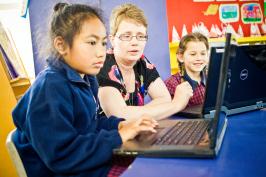
It is a Board of Trustees requirement for schools to provide all students effectively taught programmes of learning in technology. This includes learning opportunities for digital technologies within the revised technology learning area.
The revised technology learning area states that:
- over the course of years 1–10, students learn in all five technological areas
- work towards progress outcomes for digital technologies should build each year in order to ensure learners achieve all of the significant learning steps.
The New Zealand education system has always been future-focussed and it will continue to evolve to meet the needs of our young people now and for their futures.
Students are entitled to a curriculum that engages and challenges them and is forward-looking and inclusive, so that they are equipped to thrive in an increasingly digital world.
As always, schools have significant scope to give effect to the National Curriculum in a way that best meets the needs and aspirations of their learners and their local community.
How do you suggest I begin the implementation of the new digital technologies content as a school leader?
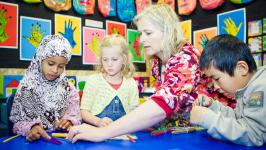
Schools that are getting ready to implement the changes to the technology and hangarau learning areas are doing a variety of things, such as:
- nominating an in-school curriculum change leader and identifying resourcing, timelines, and so on
- reviewing the new curriculum content
- reviewing their school’s digital readiness
- facilitating in-school workshops to unpack the revised technology learning area, including reviewing the revised learning area statement, strands, technological areas, and the progress outcomes for digital technologies and their associated exemplars.
For support in change planning see the digital technologies implementation support tool.
NOTE: Kia Takatū ā-Matihiko | Digital Readiness
The Ministry of Education launched this programme in 2017 as a 3-year initiative to support and imbed the new Hangarau Matihiko and Digital Technologies curriculum in kura and schools across New Zealand. Face-to-face delivery ceased at the end of Term 4, 2020.
At present, transition is underway for content and resources to be transferred.
Please refer to Kauwhata Reo and Technology Online for contemporary teaching and learning and curriculum support materials for Hangarau Matihiko and Digital Technologies.
Who will teach the new digital technologies curriculum content?
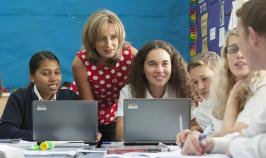
This is a school decision. Some schools will choose to use specialist teachers, some will want other teachers to incorporate aspects of digital technologies into their teaching and learning programmes.
Where digital technologies is integrated into other learning areas, it is important for leadership to ensure that this is being taught within the technology learning area conceptual framework, rather than only teaching digital skills.
How can I work out the current capability of staff to teach the new digital curriculum content?

For schools starting out, the Kia Takatū ā-Matihiko | Digital Readiness Programme was designed to build capability for staff to teach the new digital curriculum content. A free programme provided by the Ministry of Education, it coulld be done online and at a time that works for schools.
The programme included a self-review tool for teachers to assess their current understanding. Pikau | Toolkits were provided to build teachers capability to teach the new curriculum content.
This programme was been designed for teachers completely new to this area. It covered questions such as “What are digital technologies?” and focused on building knowledge of the content and understanding the intent of the learning.
NOTE: Kia Takatū ā-Matihiko | Digital Readiness
The Ministry of Education launched this programme in 2017 as a 3-year initiative to support and imbed the new Hangarau Matihiko and Digital Technologies curriculum in kura and schools across New Zealand. Face-to-face delivery ceased at the end of Term 4, 2020.
At present, transition is underway for content and resources to be transferred.
Please refer to Kauwhata Reo and Technology Online for contemporary teaching and learning and curriculum support materials for Hangarau Matihiko and Digital Technologies.
A broad range of “readiness” levels to incorporate the new content into their local curriculums existed amongst schools and kura. As a result, therefore the Ministry of Education professional support package has been structured to cater to those different needs.
Schools are encouraged to be using multiple parts of the support package at the same time to cater to the different levels of readiness of their staff.
For information about the support packages, see Digital technologies professional supports.
How might we review our technology teaching and learning in light of this change?

Answers to the questions below could provide some initial data to establish PLD and planning needs.
- Have we conducted a robust review of our local curriculum, engaging with the Leading Local Curriculum Guide series, prior to engaging with this new content?
- How could the digital content fit within the broader technology learning area in our particular setting?
- Do we have an implementation plan for the technology learning area across curriculum levels ?
- Are we tracking progress in the technology learning area?
- What reporting to parents are we doing in the technology learning area?
- What data information do we supply on student learning in the technology learning area to the next year level or school level?
- What professional learning has been offered to teaching staff in the technology learning area?
- Do we offer leadership to assist teachers with implementation of the technology learning area?
What professional supports does the Ministry offer to build staff capability to teach the new digital technologies curriculum content?

The Ministry of Education is focused on ensuring that teachers and kaiako are aware of, and have the opportunity to engage with, the content through a range of support options, and that the intent of the new content within the technology learning area is understood.
How do we get started as teachers?
How does the new digital technologies curriculum content fit in the revised technology learning area?
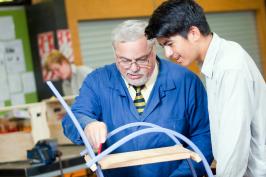
The technology learning area is made up of three strands – technological practice, nature of technology, and technological knowledge.
There are five technological areas, which provide contexts for technology learning. These are:
- designing and developing digital outcomes (DDDO)
- computational thinking for digital technologies(CT)
- designing and developing material outcomes (DDMO)
- designing and developing processed outcomes (DDPO)
- design and visual communication (DVC)
See the learning area diagram: Technology in the NZC.
The technology learning area continues to have achievement objectives that describe the kinds of learning young people should have as they deepen their knowledge and understandings in each of the technology strands. The strands do not stand alone but support and enrich each other; they are rarely taught in isolation.
See The New Zealand Curriculum Online – Technology Achievement Objectives.
Digital technologies – new technological areas
Digital technologies in the revised technology learning area includes the new technological areas – computational thinking for digital technologies and designing and developing digital outcomes. Just as the strands are inter-related, so are the technological areas. Teachers will plan ways to link across the strands and technological areas.
Digital technologies – progress outcomes
The progress outcomes are an additional feature within the digital technologies content area. They are designed to describe particular knowledge, skills, and behaviours that students need to develop over time. They are markers that describe different stages of learning and guide teachers and their students as they think about what they are learning and what their next stage looks like.
See Computational thinking progress outcomes, exemplars, and snapshots.
See Designing and developing digital outcomes progress outcomes, exemplars, and snapshots.
How do we consider progress in learning in technology?

The technology strands (technological practice, technological knowledge, nature of technology) underpin the five technological areas.
Local curriculum design should support learners to make progress in all three strands in context across the five areas.
Technology achievement objectives and progress outcomes provide indicators that support teacher judgements on progress and achievement in technology.
As with other curriculum areas, professional conversations are essential for ensuring there is a shared understanding of progress in your technology curriculum.
Do we have to deliver the technology learning area or can we just teach the digital skills components?
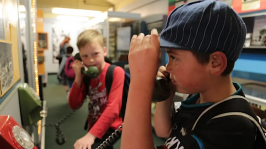
In order to teach the new content, teachers must first understand the technology learning area strands, and in particular the “nature of technology”, as this teaches the students a way of thinking.
We know that many schools across the country are getting to the heart of teaching the meaning of technology, you can view multiple real-life examples in the resource section here on Technology Online – Resources.
What does the phrase “using authentic contexts and taking into account end users” in the progress outcomes mean?
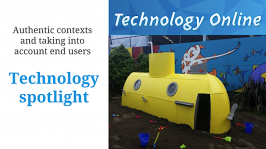
See the Technology Online spotlight: Authentic contexts and taking into account end users.
The spotlight offers key ideas, examples, links to resources, and questions to consider or discuss. It includes:
- What is an authentic context?
- Who are end users and wider stakeholders?
- What is fitness for purpose in its broadest sense?
- How do we choose contexts?
- Examples in projects
- Reflecting and planning
How do we continue and extend our development in this area?
Once we get started, how do we make sure that this learning is sustainable in our school for both teachers and learners?
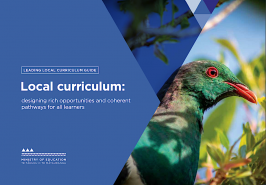
Regularly reviewing local curriculum within the framework of the NZC will ensure that learning is sustainable for both teachers and learners.
Schools are required to give effect to the National Curriculum through their local curriculum. Your local curriculum will be unique and responsive to the priorities, preferences, and issues of your community and your people. The elements of the New Zealand Curriculum are used as a framework for designing your local curriculum.
Schools regularly review their local curriculum (See the Leading local Curriculum Guide series). At the heart of local curriculum design is identifying what works and actions needed to improve learning for all students.
Schools will build a professional learning and development plan which is responsive to their needs, priorities, and approach to delivering the new curriculum content, in a manner tailored to their individual needs and context.
Implementation requirements – What's mandated?
What will ERO be looking for in 2020 in terms of implementation of the new curriculum content?
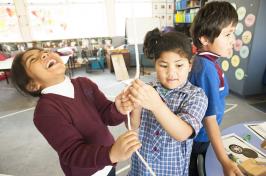
The purpose of internal and external evaluation is to improve education outcomes and to ensure that schools are accountable for their stewardship.
Under the Education Act 1989 all schools are expected to be involved in an ongoing, cyclical process of evaluation and inquiry for improvement. Through the annual reporting process, they are required to report on the achievement of their students, their priorities for improvement, and the actions they plan to take.
ERO supports this review to ensure schools are providing their learners with the rich and engaging curriculum they are entitled to.
Is it expected that by 2020 students will be meeting the progress outcomes for digital technologies to match the curriculum level expected for their year level at school?
Over time students should be supported to progress in their learning in technology. In 2020, the Ministry of Education expects that schools will be using the revised learning area to provide students with even broader opportunities to learn in and about technology, informed by the new content around computational thinking and designing and developing digital outcomes.
As for all parts of the curriculum, teachers will design learning programmes with rich and authentic local contexts that provide quality learning experiences for students.
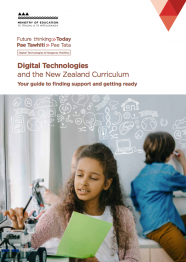 Digital Technologies and the New Zealand Curriculum – Your guide to finding support and getting ready
Digital Technologies and the New Zealand Curriculum – Your guide to finding support and getting ready

For key information about getting ready, see also the Ministry of Education booklet Digital Technologies and the New Zealand Curriculum – Your guide to finding support and getting ready.
Related videos
Learning with the internet of things in years 7–8 (04:15)
Bill Boyes, Iain Cook-Bonney, and Tahuna Normal Intermediate School students talk about the wide range of digital technologies they can now make using their new skills....
Learning with the internet of things: Overview of the programme (05:11)
Julie McMahon and Andrew Hornblow discuss the project, its drivers, and how simple and inexpensive electronics can be.
Learning with the internet of things in years 5–6 (04:48)
Andrew Wills and the students at Bradford Primary School describe how they used their new knowledge in electronics to solve problems in their school....
Learning with the internet of things in years 9–10 (05:37)
Julie McMahon and Mark Greenfield discuss the application of electronics and the internet of things at St Hilda’s Collegiate and King's High School....
Collaboration between Ngāti Rangi Trust and Ruapehu College in digital technologies (04:10)
Erena Mikaere-Most from Ngāti Rangi Trust and Principal Kim Basse discuss their collaboration and the impetus for this project....
Creativity, critical thinking, and problem solving in digital technologies (03:16)
The digital technologies teacher, principal, and students discuss the success of the approach used to engage students, and in particular girls, in digital technologies. ...
Entry and exit portfolios in digital technologies years 9–10 (03:30)
In this video ICT Tutor Kawana Wallace describes the rationale and use of the exit and entry portfolios and how they were developed. ...

